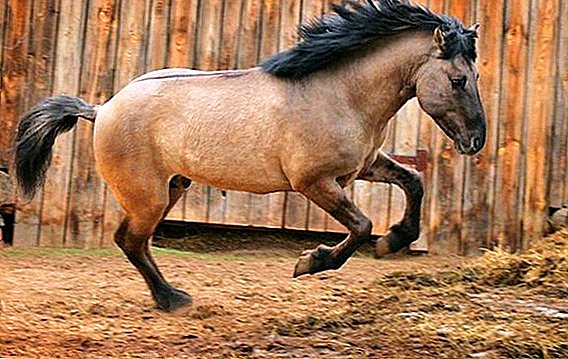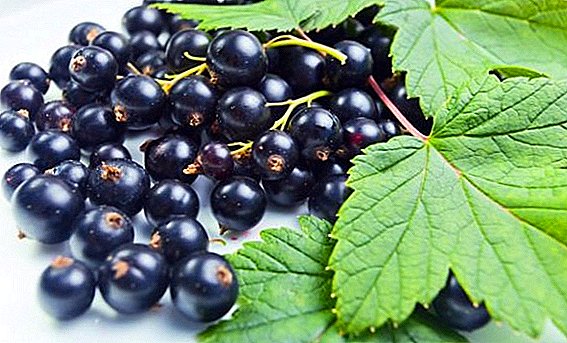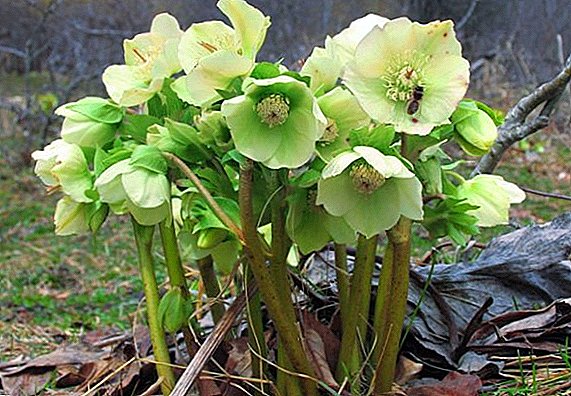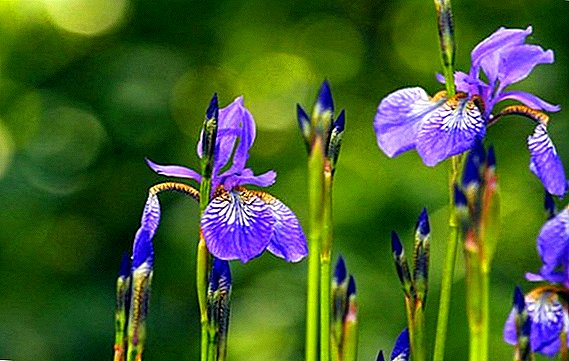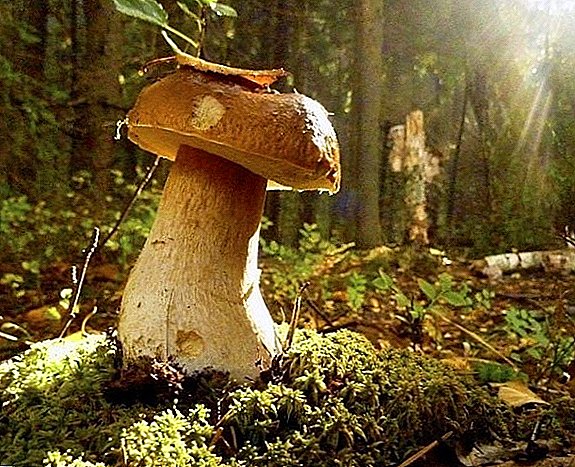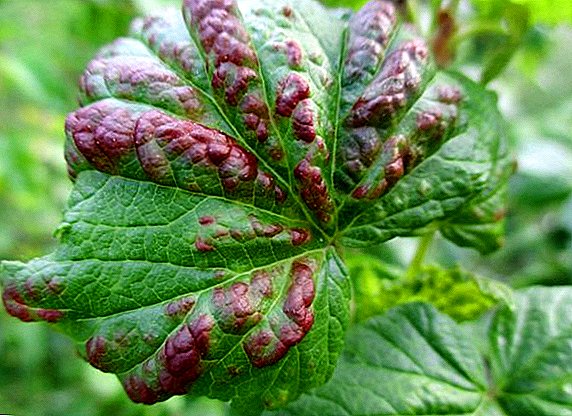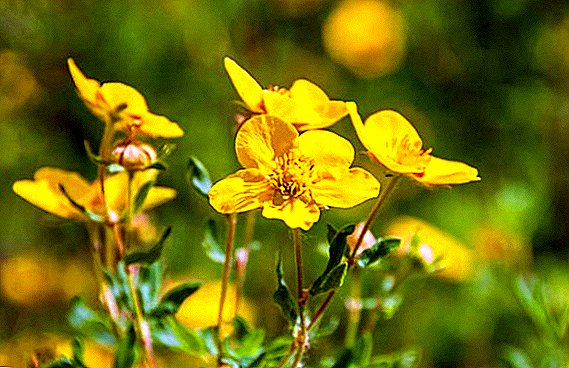 Growing strawberries requires a lot of strength and patience. But growing strawberries is half the battle. It is also necessary to protect it from numerous pests (and there are plenty of people willing to feast on strawberries). One of these dangerous insects that can kill 50-80% of the total crop is weevils. Signs that your strawberry was attacked by this enemy are: the appearance of small holes in the green leaves of the plant, a sudden fall of the peduncles, the drying of the buds, as if someone had cut them. In such a situation, you will not win a complete victory over the beetle - time is lost, and in order not to lose the entire harvest, you will have to fight thoroughly with the weevil. To prevent such a situation, it is necessary to prepare in advance, to get to know better what the weevil is and how to fight it with strawberries.e.
Growing strawberries requires a lot of strength and patience. But growing strawberries is half the battle. It is also necessary to protect it from numerous pests (and there are plenty of people willing to feast on strawberries). One of these dangerous insects that can kill 50-80% of the total crop is weevils. Signs that your strawberry was attacked by this enemy are: the appearance of small holes in the green leaves of the plant, a sudden fall of the peduncles, the drying of the buds, as if someone had cut them. In such a situation, you will not win a complete victory over the beetle - time is lost, and in order not to lose the entire harvest, you will have to fight thoroughly with the weevil. To prevent such a situation, it is necessary to prepare in advance, to get to know better what the weevil is and how to fight it with strawberries.e.
Did you know? The family of weevil beetles (elephants) (lat. Curculionidae) has more than 70,000 species. The name of the beetle is associated with a long proboscis on the head (rostrum), with which the beetle pierces the tissues of plants, with the help of it it feeds and lays eggs. The weevil family is represented by a variety of sizes (from 1 mm to 50 mm), body shapes (round, flat, cylindrical, etc.), colors. The larvae of some weevils live in the ground, others - in flower buds. Each species has its own niche, its own tastes: someone eats forest plants, someone uses palm trees, someone uses garden crops, someone (for example, granary weevil) eats cereals collected by people.
What does a strawberry pest look like?
 More than 5,000 species of these beetles live in middle latitudes. Among them, the greatest threat to strawberries is the raspberry-strawberry weevil (lat. Anthonomus rubi). To successfully fight the pest, you need to know what the weevil looks like. The size of the adult beetle is small - up to 3 mm, the color of the chitinous cover is black and brown. The beetle is covered with short hairs, has wings with which it flies from plant to plant. Weevil females are much larger than males. The name of this type of weevil indicates its addiction - the beetle affects not only strawberries and strawberries, but also raspberries, blackberries, rose bushes and wild rose.
More than 5,000 species of these beetles live in middle latitudes. Among them, the greatest threat to strawberries is the raspberry-strawberry weevil (lat. Anthonomus rubi). To successfully fight the pest, you need to know what the weevil looks like. The size of the adult beetle is small - up to 3 mm, the color of the chitinous cover is black and brown. The beetle is covered with short hairs, has wings with which it flies from plant to plant. Weevil females are much larger than males. The name of this type of weevil indicates its addiction - the beetle affects not only strawberries and strawberries, but also raspberries, blackberries, rose bushes and wild rose.
The mating period is one and a half months. During this time, one female is able to lay up to 50 eggs. The raspberry-strawberry weevil is a representative of a long-nosed one - it is more attracted by flower buds. It is in them that weevil females lay eggs (one in one bud), from which the larvae hatch - thick white or cream worms (the head has a brown chitinous shell). After 20 days, pupation occurs. The soft pupa of yellowish color has the rudiments of a puffed-up head, wings, legs. After a few weeks, the pupa turns into an adult beetle. Beetles hibernate in the ground in rotten leaves under a strawberry bush and become active again after the soil warms to plus 13 degrees Celsius.
Did you know? What is a weevil? Weevil is one of the most dangerous pests, eating roots, leaves, stems, fruits of almost all known plants (including aquatic). Most species of weevils live in the tropics. Global warming and human activity have led to the fact that many types of weevils, getting together with imported products in other regions, acclimatize in new climatic conditions. A striking example is the red palm weevil from Southeast Asia, which was a disaster for France, Spain, Mexico, and even reached the Krasnodar Territory of Russia (in 2015, this pest destroyed many date palms in Sochi).
Weevil Harm
 Overwintering beetles get out of the ground and, in anticipation of the buds, concentrate in the middle of the strawberry bushes, on the growing stalks and leaves. After the appearance of buds and mating, the female weevil damages the bud, lays an egg in it, and then the process described is given: larva, pupa, young bug (approximately in the middle of summer). As a result, the pest devours buds, flowers and stalks, strawberry leaves. Only one female can damage 50 flowers. If there are many pests, and a strawberry plot is small, then you can completely lose the harvest. With strawberries weevils can switch to raspberries.
Overwintering beetles get out of the ground and, in anticipation of the buds, concentrate in the middle of the strawberry bushes, on the growing stalks and leaves. After the appearance of buds and mating, the female weevil damages the bud, lays an egg in it, and then the process described is given: larva, pupa, young bug (approximately in the middle of summer). As a result, the pest devours buds, flowers and stalks, strawberry leaves. Only one female can damage 50 flowers. If there are many pests, and a strawberry plot is small, then you can completely lose the harvest. With strawberries weevils can switch to raspberries.
Did you know? In 1920, in the United States, in the city of Enterprise (Alabama), a monument to the cotton weevil beetle was erected. The monument was erected by farmers as a token of appreciation after the weevil destroyed all cotton crops and ruined farms. After that, the farmers abandoned the monoculture, began to develop other sectors of agriculture and quickly became rich.
Prevention and agrotechnical methods of pest control
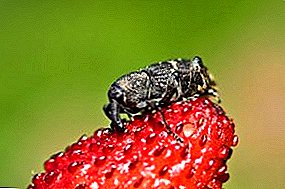 The harm that the raspberry-strawberry weevil does is so great that preventive measures are needed to combat it. Preventing the appearance of a pest is easier than trying to get rid of it. Prevention should be addressed in the fall: after the end of the harvest, it is necessary to cut off all the leaves of strawberry bushes, weed, weed, treat with insecticide. If the leaves have signs of damage by weevils, then they should be burned.
The harm that the raspberry-strawberry weevil does is so great that preventive measures are needed to combat it. Preventing the appearance of a pest is easier than trying to get rid of it. Prevention should be addressed in the fall: after the end of the harvest, it is necessary to cut off all the leaves of strawberry bushes, weed, weed, treat with insecticide. If the leaves have signs of damage by weevils, then they should be burned.
In addition, the use of some agricultural practices also contributes to the success of the fight against weevils:
- it is necessary to "dissolve" raspberry and strawberry bushes on the plot (both plants are equally affected by the pest);
- plant strawberry varieties with the shortest flowering period;
- buds and leaves damaged by the pest;
- regularly use a mechanical method of dealing with beetles - collecting beetles from the bushes. It is best to spend it in the early morning (after the night the beetles have not warmed up yet). In the evening, you can lay paper, film under the bushes (you can use a flat tray, etc.), and in the morning gently shake the plant and collect beetles (then burn the paper, wash the tray with water). Despite the complexity, the effectiveness of this method is high;
- try to scare away the pest with a strong aroma (plant garlic, onions, marigolds, etc.), and you must periodically break off or cut off the shoots to enhance odor;
- dig up the ground for the winter, mulch with pine needles or a dark dense film.
 Experienced gardeners, answering how to deal with weevil on strawberries in spring, are advised to arrange traps for weevils. For this, a special mixture is prepared: 200 g of sugar and 100 g of yeast per liter of water. This mixture blocks in heat. Then it is poured into a glass container with a narrow neck. Traps are placed among the strawberry bushes during its flowering (the mixture must be changed every three days). A simpler (but no less effective) solution would be to use traps made of a piece of cloth (burlap) and corrugated cardboard on top at a hot afternoon. Hiding from the heat, the weevils are hiding under corrugated paper, and the gardener can only remove them (along with the paper)
Experienced gardeners, answering how to deal with weevil on strawberries in spring, are advised to arrange traps for weevils. For this, a special mixture is prepared: 200 g of sugar and 100 g of yeast per liter of water. This mixture blocks in heat. Then it is poured into a glass container with a narrow neck. Traps are placed among the strawberry bushes during its flowering (the mixture must be changed every three days). A simpler (but no less effective) solution would be to use traps made of a piece of cloth (burlap) and corrugated cardboard on top at a hot afternoon. Hiding from the heat, the weevils are hiding under corrugated paper, and the gardener can only remove them (along with the paper)
Important! When deciding how to get rid of the weevil on a strawberry, you need to remember that the more important factor will not be the method by which you will begin to fight the pest, but by the time period you begin this fight. There is no one-step remedy - you will need to strike several blows when the weevil beetles are the most vulnerable.
Fighting folk remedies
 One of the advantages of folk pest control means is the possibility of using them in any period of vegetative development of strawberries without harm to the plant. Traditional methods require repeated repetition - they are easily washed off when watering or during precipitation. The effectiveness of folk remedies from the weevil on the strawberry is very different, so it is better to use proven experience.
One of the advantages of folk pest control means is the possibility of using them in any period of vegetative development of strawberries without harm to the plant. Traditional methods require repeated repetition - they are easily washed off when watering or during precipitation. The effectiveness of folk remedies from the weevil on the strawberry is very different, so it is better to use proven experience.
Spraying strawberry bushes are popular:
- mustard solution (100 g of dry mustard in 3 liters of water);
- a solution of potassium permanganate (5 g per 10 l of water);
- bitter chilli extract (1 kg of fresh red pepper per 10 liters of water, infuse for two days, then boil for 10 minutes and infuse for two more days. Store in a tightly closed container);
- during the formation of buds - emulsion of mustard and laundry soap (10 liters of water, 200 g of soap, 200 g of mustard);
- infusion of tansy (evening): 1.5 kg of fresh tansy to 5 liters of water. Insist 3-4 days, 30 min. boil, dilute with 5 liters of cold water, before spraying add 50 g of soap;
- tobacco garlic infusion;
- liquid ammonia (2 tablespoons per bucket of water);
- a solution of wood ash (3 kg), laundry soap (40 g) and 10 liters of water (during budding);
- decoction of bitter wormwood (one plant is slightly wrought, boil for 15 minutes in 4 liters of water, add 6 liters of cold water and 40 g of soap).
A good result is achieved by mulching strawberries with ash in the spring, as well as watering with an iodine solution (1 tsp. Per bucket of water).
Important! When asked when to sprinkle strawberries from weevil, experts say that strawberry bushes should be sprayed only during budding, when buds are formed.
Biological Treatment
On safety for a plant, the person and bees to biological methods biological means of pest control are approached. They are environmentally friendly, do not pollute and do not accumulate in the soil, plants, etc.
They are introduced from early spring to late autumn. It should be borne in mind that:
- the results of the action of such drugs are noticeable only through time;
- multiple treatment with them is necessary;
- Biologics are highly dependent on weather conditions (lowering the temperature, rain, fog, etc., greatly affect the efficiency).
 Such biological preparations from the weevil, such as "Akarin", "Iskra-bio", "Fitoverm", "Nemabakt", "Antonem-F" and others, are well tolerated by strawberry bushes. The composition of drugs include microorganisms that can protect the strawberries for several years. The drug "Cesar" (contains bacteria Pseudomonas B-306, the enzymes of the fungus Stereptomyces avermitilis) has a good efficacy - causes paralysis of weevils and their death within 5-7 days. Consumption of the drug - 10-15 ml per 10 l of water. Spraying with biological products is carried out in calm, dry weather, in the evening.
Such biological preparations from the weevil, such as "Akarin", "Iskra-bio", "Fitoverm", "Nemabakt", "Antonem-F" and others, are well tolerated by strawberry bushes. The composition of drugs include microorganisms that can protect the strawberries for several years. The drug "Cesar" (contains bacteria Pseudomonas B-306, the enzymes of the fungus Stereptomyces avermitilis) has a good efficacy - causes paralysis of weevils and their death within 5-7 days. Consumption of the drug - 10-15 ml per 10 l of water. Spraying with biological products is carried out in calm, dry weather, in the evening.
Chemical spraying
Chemical preparations against strawberry pests are highly reliable and effective. As a means of weevil on strawberries most often used means "Karbofos", "Metafos", "Corsair", "Atelix" and "Inta-vir."
Important! The chemicals in the composition of these insecticides are very aggressive, they have a negative effect not only on weevil pests, but also on beneficial insects (bees), on the human body. The use (with the observance of security measures) of such means is justified in the case when all other methods did not help.
 The first processing of strawberries in the spring from the weevil is carried out five days before flowering. The second treatment should be carried out in the summer (when a new generation of weevils will appear). With a very strong pest infestation, the autumn processing is still carried out when the harvest has already been gathered. Spraying is carried out early in the morning (so as not to harm the bees and other beneficial insects).
The first processing of strawberries in the spring from the weevil is carried out five days before flowering. The second treatment should be carried out in the summer (when a new generation of weevils will appear). With a very strong pest infestation, the autumn processing is still carried out when the harvest has already been gathered. Spraying is carried out early in the morning (so as not to harm the bees and other beneficial insects).


